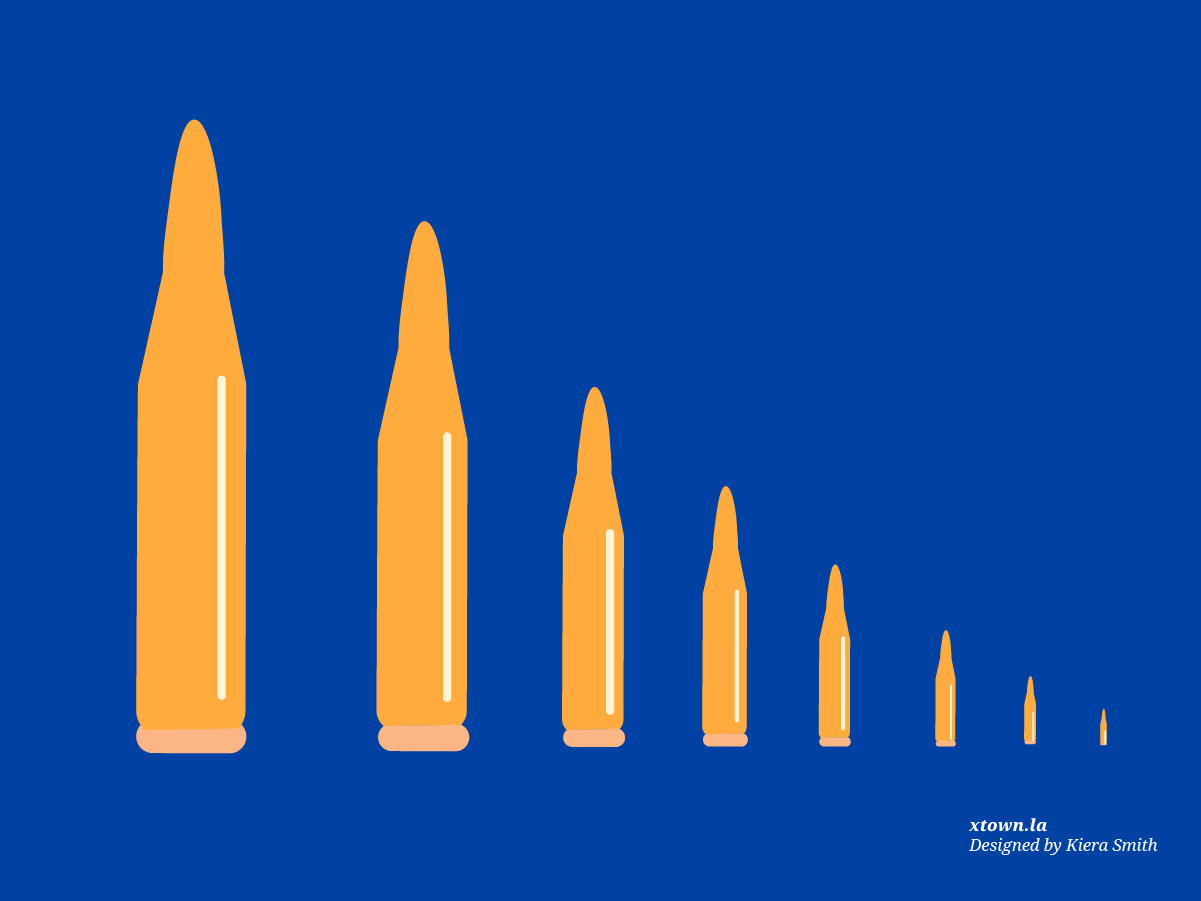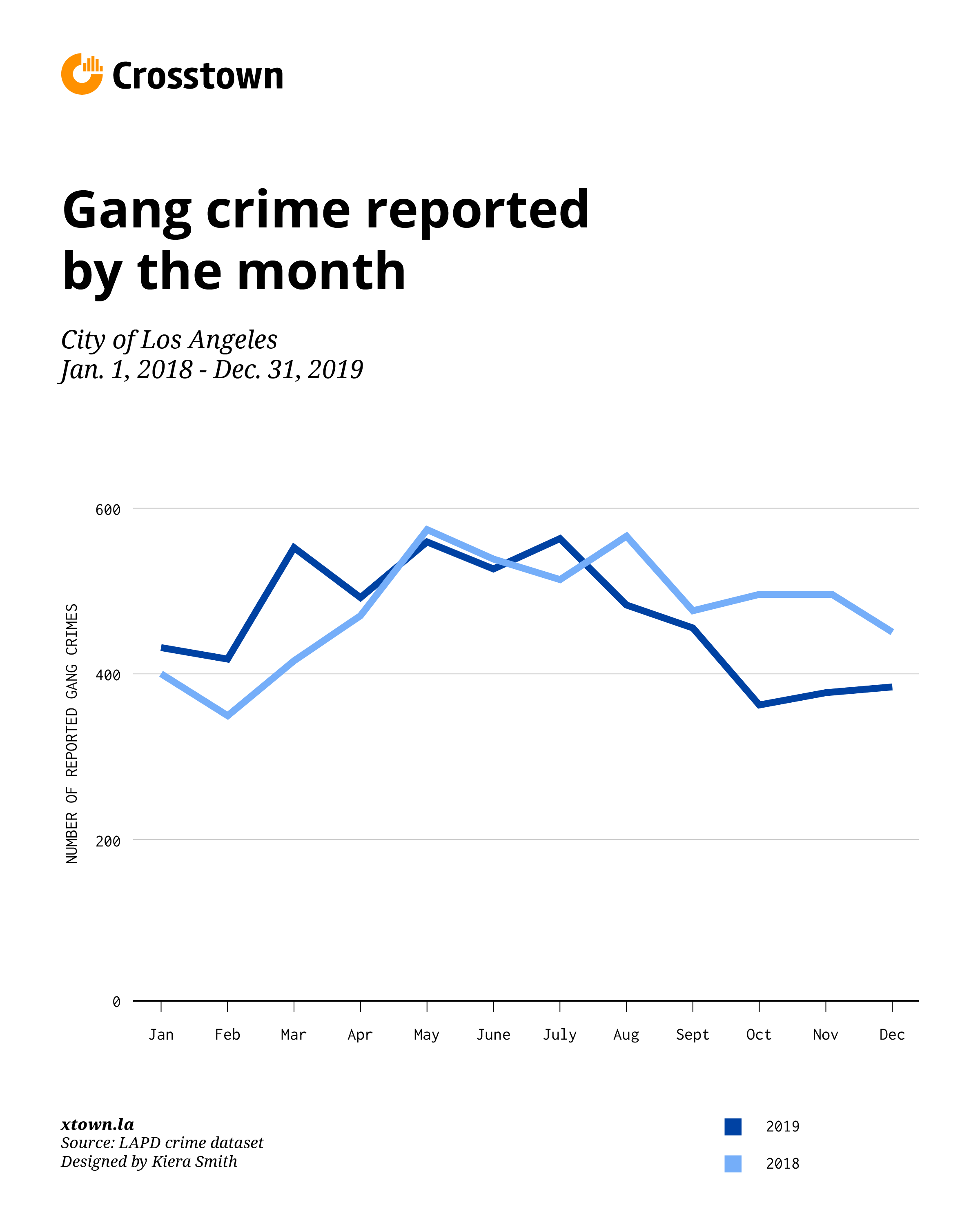LA gang crime falls for third year in a row

Gang crime in the City of Los Angeles fell for the third straight year, decreasing almost 2.5% between 2018 and 2019, according to Los Angeles Police Department data.
There were 5,590 reported gang crimes last year, compared with 5,731 in 2018.
Reported gang crimes spiked 9% during the first half of last year, around the time of the shooting death of rapper and community activist Nipsey Hussle on March 31, 2019. In July, the LAPD reported 563 gang-related crimes, the highest point of 2019. But during the last three months of the year, the monthly average dropped to 372 gang crimes.

Last year saw the second-lowest numbers of gang crimes since 2010, the year the LAPD started making its crime data publicly available. Reports of gang crime fell from 7,916 instances in 2010 to a decade low of 5,396 in 2014. Gang crimes then increased in 2015 and 2016, before falling again starting in 2017.
Overall, gang crime has decreased by almost 30% in the last decade.

Violent crime made up the vast majority, or almost 70%, of reported gang crimes over the last decade. Assault with a deadly weapon was the most common type of gang crime reported, with almost 20,000 instances. The next-highest crime, robbery, came in at around 11,000.
The most common property crime associated with gang violence was vandalism, with more than 5,000 instances reported over the decade. Vandalism was also the third-most common crime associated with gang violence overall. Criminal threats and battery rounded out the top five gang-related crimes.
Most common gang-related crimes (2010-2019):
- Assault with a deadly weapon: 19,756
- Robbery: 11,039
- Vandalism: 5,095
- Criminal threats: 5,077
- Battery: 3,207
The LAPD credits the drop in gang violence to programs like the Gang Reduction and Youth Development Foundation, or GRYD, according to LAPD Officer Hector Diaz. GRYD provides alternative programming for youth in neighborhoods that are the most impacted by gang violence to reduce the likelihood that they will be recruited into gangs.
However, gang researcher Alex Alonso, a professor at California State University, Long Beach, notes that a nationwide decline in gang crimes began in the 1990s.
This data comes amid recent revelations that a number of officers from the LAPD Metro division falsely portrayed some people as gang members. Los Angeles Police Chief Michel Moore said the incident had a “criminal aspect” and pledged to investigate.
How we did it: We examined LAPD publicly available data on reported gang-related crimes for the year 2019 as well as all reported gang-related crimes since Jan. 1, 2010, when the LAPD started making its crime data publicly available. For neighborhood boundaries, we rely on the borders defined by the Los Angeles Times. Learn more about our data here.
LAPD data only reflects crimes that are reported to the department, not how many crimes actually occurred. In making our calculations, we rely on the data the LAPD makes publicly available. On occasion, LAPD may update past crime reports with new information, or recategorize past reports. Those revised reports do not always automatically become part of the public database.
Want to know how your neighborhood fares? Or simply just interested in our data? Email us at askus@xtown.la.






